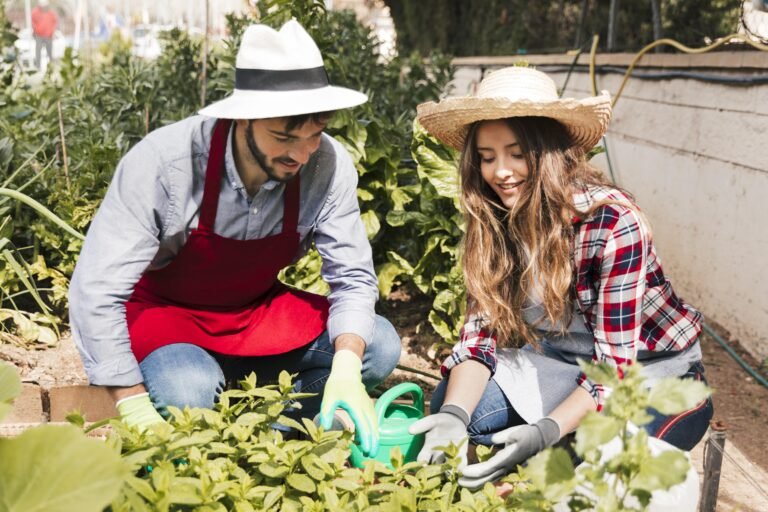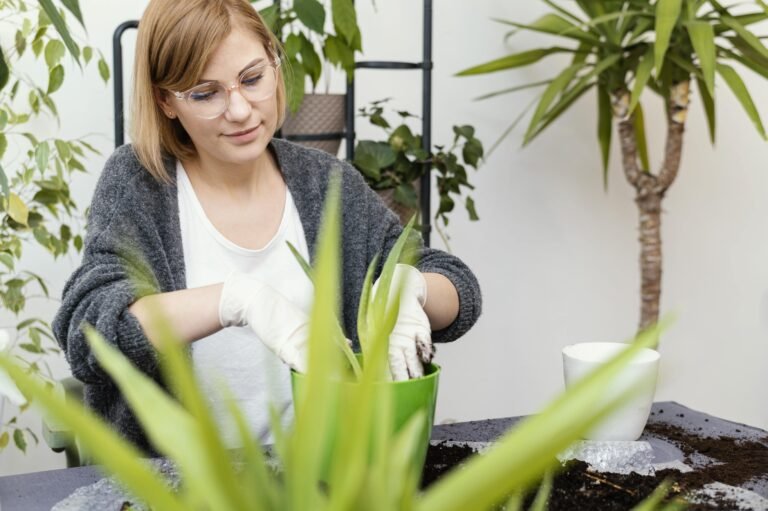How To Protect Plants From Frost?
When it gets cold outside and ice starts forming, your plants need extra care to stay healthy. Cold weather can hurt or even kill delicate plants, so it’s important to protect them before it gets too cold. This is true for your vegetable garden and the pretty plants in your yard.
There are lots of ways to keep your plants safe from the frost. We’ll show you some easy things you can do to help your plants stay strong during the cold months. Let’s learn how to protect your garden from frost together!
Understanding Frost
Frost happens when it gets really cold outside and the water in the air turns into tiny ice crystals on plants. This usually happens on clear, still nights. The ice can hurt the plants by poking holes in their leaves and stems. This makes the plants dry out and die.
Young plants and new ones are the weakest against frost. Frost can also stop plants from making flowers and fruit. So, it’s important to know which plants can handle cold weather and which ones need extra help.
Preparation Before Frost Hits
It’s important to get your garden ready before it gets really cold outside. This will help your plants stay healthy.
- First, watch the weather. Check the news to see if it will get very cold. This will give you time to protect your plants.
- Second, know your plants. Some plants can handle cold weather, like kale and Brussels sprouts. But other plants, like tomatoes and cucumbers, don’t like the cold. Figure out which plants need extra help.
- Third, use mulch. Put a layer of stuff like leaves, straw, or wood chips around your plants. This will help keep the soil warm and protect the plant’s roots from the cold.
- Clean Up Your Garden Clean up your garden by taking away any dead or sick plants. This helps keep bad bugs and plant diseases away, which can be worse when it’s cold. Make sure there’s space around your plants so you can cover them easily when it gets cold.
- Water Your Plants Give your plants a good drink of water before they get cold. Wet soil stays warmer than dry soil, which helps protect the plant’s roots. But don’t give them too much water, because that can hurt the roots too.
By doing these things, your plants will be stronger when it gets cold, and it will be easier to protect them.
Frost Protection Methods
To protect your plants from frost, several practical methods can be employed. Each method offers varying levels of protection, and often, combining multiple approaches provides the best results.
Ways to Protect Your Plants from Frost
There are lots of ways to keep your plants safe when it gets really cold. You can use one way or try a few together to help your plants stay healthy.
Cover Your Plants
You can buy special covers for your plants or use old blankets. These covers keep the plants warm like a little blanket. Make sure to put something under the cover to lift it up a bit so it doesn’t touch the plants.
Use Mulch
Remember that stuff you put around your plants to help the soil? You can use more of it to keep the plants’ roots warm. Just make sure not to put it directly on the plants.
Use Cloches
Cloches are like little hats for your plants. They are made of glass or plastic and keep the plant warm like a tiny greenhouse. You can also use plastic or cloth covers over rows of plants to keep them safe.
Make a Mini-Greenhouse
You can build a little greenhouse for your plants. Use old windows or clear plastic to make a box with a top that lets sunlight in. This is great for young plants and helps them grow even when it’s cold.
Use Heat
If it’s cold outside, you can use lights or small heaters to keep your plants warm. But be careful, because fire can be dangerous. You can also put big rocks or water in the garden to help keep things warm at night.
By doing these things, your plants will be much safer from the cold.
Post-Frost Care
After a cold night, you need to check on your plants to see if they’re okay.
- Look at your plants. Check if their leaves are droopy or look funny. Maybe their flowers are frozen or their stems are hurt. If you see any bad parts, take them off so they don’t make the other parts sick. But don’t cut off too much too soon.
- Water your plants. If the ground is dry, give your plants some water. Cold weather can make the ground dry, so they need water to get better. Don’t give them food yet, because they’re already stressed. Wait until they start to look better.
- Keep protecting them. If it’s going to be cold again, make sure their covers are still on and working. Check that anything you’re using to keep them warm is still okay.
- Take care of the soil. Add more mulch around your plants to keep the ground warm and wet. You can also add compost to help the soil be healthy.
- Keep an eye on your plants. After the cold night, watch your plants carefully. Look for anything strange, like slow growth or sick parts. Check for bugs too, because sick plants can attract them.
- Learn from what happened. Think about what helped your plants and what didn’t. Maybe you need to do things differently next time. You can buy new things to help protect your plants or change how you plant them.
If you do these things, your plants will be stronger and ready for the next cold night.
In Conclusion
To keep your plants safe when it gets really cold outside, you need to do a few things. First, get your garden ready before it gets cold. Then, protect your plants with things like covers and mulch. After a cold night, check on your plants and take care of them. With a little extra work, your plants can stay healthy even when it’s cold outside.
FAQs
1. What is frost and how does it affect plants?
Frost occurs when temperatures drop below freezing, causing water vapor in the air to form ice crystals on surfaces. This can damage plant tissues by puncturing cells, leading to wilting, dehydration, and potential plant death. Frost can also impact plant growth and reduce fruit and flower production.
2. When should I start preparing for frost?
Start preparing for frost in late fall or early winter when temperatures begin to drop. Monitor weather forecasts for frost warnings to be proactive and implement protection measures before the frost occurs.
3. How can I use frost cloths to protect my plants?
Frost cloths are lightweight, breathable fabrics that cover plants to trap heat and shield them from frost. Simply drape the cloth over your plants and secure the edges to prevent it from blowing away. For added protection, use stakes or hoops to keep the cloth from touching the foliage directly.
4. What type of mulch is best for frost protection?
Organic mulches such as straw, leaves, or wood chips work well for frost protection. Apply a 3-4 inch layer around the base of plants to help insulate the soil and keep root systems warm.







